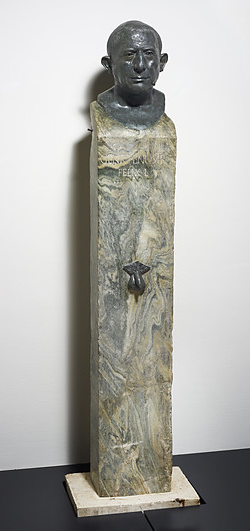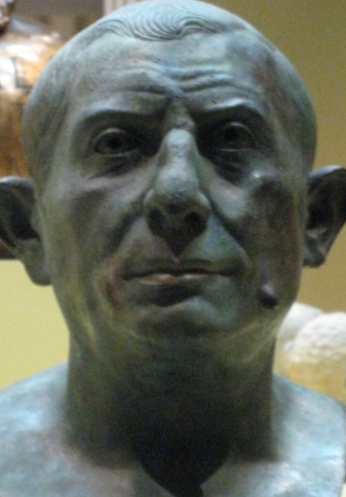Were the ancient Pompeians just like us?
The current Pompeii-and-Herculaneum exhibition at the British Museum treads a very careful path between the immediately approachable familiarity of the ancient city and its strange distance from us.
On the one hand, there are all kinds of things about the ancient town that we can still recognise -- the chamber pots, the taps, the bread that (if it weren't actually carbonised) you could pick up and eat out of the oven. On the other hand, as the catalogue makes clear, the context is utterly destabilizing. It's partly the omnipresent slavery (men and women who didnt really count -- or counted so little that you could have sex in front of them and not even notice they were there). But then it's also the puzzling structures of domestic life and the organisation of the ancient "home". There are all those rooms we call "cubicula", so often transated "bedrooms" -- but they are not "bedrooms" in our sense at all. These might be places you went to lie down on a couch, but also to entertain your intimate friends and do the most important business you had on your hands (a sort of inner office). So hardly "bedroom" -- and indeed the truth is we dont really know where most Romans actually slept anyway.
So far so good.
 But it's pretty clear from the press reports -- and from such visitor reactions that I've witnessed -- that one half of that balance has tended to be forgotten in the excitement about the show. Most accounts have bought entrely into the "oh my goodness, they're just like us" side of the story, and to reaching out across the centuries -- and finding a life style that is reassuringly familar.
But it's pretty clear from the press reports -- and from such visitor reactions that I've witnessed -- that one half of that balance has tended to be forgotten in the excitement about the show. Most accounts have bought entrely into the "oh my goodness, they're just like us" side of the story, and to reaching out across the centuries -- and finding a life style that is reassuringly familar.
The problem is, of course, that in one way that's right... there are cradles and jewels and cosmetics etc in the show that we feel we could almost pick up and use. And I've spent quite a lot of my life saying exactly that. But that only makes sense in the context of all the unfamiliar aspects too. And I'd urge anyone going to the BM to keep their eyes open for the strange and not just go a bit goo-ey about that charming wooden Roman cradle (it's easy enough, I've goo-ed with the best, and sincerely too, about that particular piece of furniture ).
(it's easy enough, I've goo-ed with the best, and sincerely too, about that particular piece of furniture ).
The sex is an easy place to start; because -- however we decide to interpret the famous marble Pan fucking the marble goat -- we can instantly see that it not something that fits easily into a modern garden. But in a way as I saw yesterday, one famous portrait statue is a good marker of the combination of the famiar and the oddly foreign. I'm thinking of the warts and all bronze image of the man who may be L Caecilius Iucundus, the Pompeian banker, famous from the Cambridge Latin Course. If you crop the picture at the top and just show the head, it's a wonderfully "modern". image. But look below. The realistic head was originally plonked on the top of a plain, squared marble shaft, about 5 foot tall. And in the middle, at about the right place, was stuck a bronze willy etc.
An image that seems totally familiar of you carefully "excerpt" it, looks decidedly unfamiliar if you see it whole.
So my little campaign, I suppose, is to get people to rediscover the strange in Pompeii and its wonderful exhibition.
Mary Beard's Blog
- Mary Beard's profile
- 4076 followers




